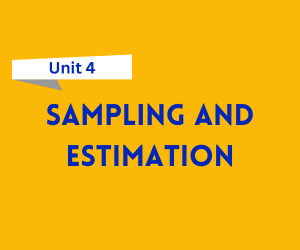In the fast-paced world of business, decision-making is at the heart of every success or failure. Whether it’s launching a new product, entering a new market, or choosing the right investment, managers are constantly faced with choices that involve risk and uncertainty. Decision Theory and Risk Analysis is the study of methods and tools that help us make these choices more rationally and systematically.
This unit introduces the basic framework for decision-making under certainty, risk, and uncertainty, along with analytical tools like payoff tables and decision trees. It also explains decision-making criteria such as Expected Value, Maximin, Maximax, and Minimax Regret—all designed to evaluate different strategies in business situations.

Download UNIT 4 – Decision Theory and Risk Analysis Notes
Get simplified revision notes for this unit:
Download Unit 4 Notes PDF
1. Introduction to Decision Theory
Decision Theory is essentially the science of making better decisions. It provides a structured way of analyzing possible alternatives, considering the consequences of each, and selecting the option that leads to the most desirable outcome.
In business, decisions are rarely made in a vacuum. External factors like market demand, competition, economic trends, and even government policies can influence the outcome. That’s why decision-making often involves probabilities and risk assessment.
2. Decision-Making Environments
2.1 Decision-Making Under Certainty
In this environment, the decision-maker knows exactly what the outcome will be for each alternative. There is no doubt and no variability.
Example: A company deciding to deposit money in a fixed-term bank deposit with a guaranteed interest rate.
Since outcomes are predictable, decision-making here is straightforward: choose the option that yields the best known result.
2.2 Decision-Making Under Risk
Here, the decision-maker does not know the exact outcome but can estimate the probability of different outcomes occurring.
Example: Launching a new product where market research suggests a 60% chance of high demand, a 30% chance of medium demand, and a 10% chance of low demand.
The best approach here is to calculate Expected Values and choose the option with the highest expected payoff.
2.3 Decision-Making Under Uncertainty
In this case, the decision-maker has no reliable probability estimates for outcomes. There is complete uncertainty.
Example: Entering a foreign market where there is no prior market data available.
Here, decision-making relies on decision criteria like Maximin, Maximax, and Minimax Regret to guide choices when probabilities cannot be determined.
3. Payoff Tables – Organizing Information
A payoff table is a simple yet powerful tool for displaying different decision alternatives and their associated outcomes.
Structure of a Payoff Table:
Rows: Represent decision alternatives.
Columns: Represent different states of nature (possible outcomes).
Cells: Contain the payoff (profit, revenue, or utility) for a given alternative and state of nature.
Example: A company deciding whether to invest in a small, medium, or large factory depending on market demand.
| Decision / Market Demand | High Demand | Medium Demand | Low Demand |
|---|---|---|---|
| Small Factory | ₹60,000 | ₹40,000 | ₹20,000 |
| Medium Factory | ₹80,000 | ₹50,000 | ₹10,000 |
| Large Factory | ₹1,20,000 | ₹40,000 | -₹30,000 |
This table provides a clear view of potential profits or losses for each choice.
4. Decision Trees – Visualizing Choices
A decision tree is another decision-making tool that represents decisions and their possible consequences in a tree-like diagram. It is especially useful for multi-stage decisions.
How it Works:
Squares represent decision points.
Circles represent chance events (with probabilities).
Branches represent possible actions or outcomes.
By working backward from the outcomes to the initial decision point (a process called rollback analysis), we can identify the most profitable decision path.
5. Decision-Making Criteria
When probabilities are known (risk) or unknown (uncertainty), several criteria can be used:
5.1 Expected Value (EV)
When probabilities are known, EV is calculated as:
![]()
The alternative with the highest EV is chosen.
Example: If a product launch has a 70% chance of earning ₹1,00,000 and a 30% chance of earning ₹40,000,

5.2 Maximin Criterion
This is a pessimistic approach, suitable for risk-averse decision-makers.
Identify the minimum payoff for each alternative.
Choose the one with the highest among these minimum payoffs.
This ensures the “worst-case scenario” is as good as possible.
5.3 Maximax Criterion
This is the optimistic approach, for risk-seeking decision-makers.
Identify the maximum payoff for each alternative.
Choose the alternative with the highest maximum payoff.
It focuses on the best possible scenario.
5.4 Minimax Regret Criterion
This method minimizes the potential for future regret.
Construct a regret table by calculating the difference between the best payoff in each state of nature and the payoffs of other options.
Identify the maximum regret for each decision.
Choose the decision with the smallest maximum regret.
This approach is useful when decision-makers want to avoid the pain of “if only I had chosen differently.”
6. Risk Analysis in Business Decisions
Risk analysis helps quantify uncertainty and assess the impact of possible adverse events. Some common methods include:
Sensitivity Analysis: Studying how changes in input variables affect outcomes.
Scenario Analysis: Evaluating best-case, worst-case, and most-likely situations.
Simulation: Using models like Monte Carlo simulations to estimate outcome probabilities.
By understanding risks, businesses can prepare contingency plans and allocate resources more effectively.
7. Applications in Business Strategy
Decision theory and risk analysis are applied in various business areas:
Investment Decisions: Choosing between projects based on expected returns and risks.
Production Planning: Deciding on capacity expansion under fluctuating demand.
Marketing Strategy: Selecting promotional campaigns with uncertain customer responses.
Supply Chain Management: Managing inventory and supplier contracts under uncertain lead times.
